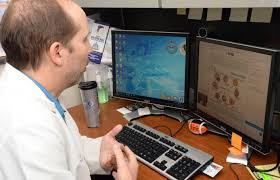The COVID-19 vaccine hurts for a little while, but the long-term effects are miraculous. For doctors, regulators, and patients, telehealth will likely have a similar timeline.
I’ve seen some recent articles where: A blogger realized, “Telehealth has become a commodity;” Amazon announced its telehealth business is going national; prosecutors unveiled billions of dollars in telehealth fraud; some Montana doctors fear the encroachment of telehealth; and where two health care managers touted telehealth as a boon for underserved communities.
Let’s consider them one by one.
(1) Health care analyst Olivia Webb wrote, “I’m not the first to say that telehealth has become a commodity.” What might she mean? Wikipedia defines a commodity as a good where “the market treats instances of the good as equivalent or nearly so with no regard to who produced them.”
Traditional medicine is the opposite. Patients care immensely about which doctor treats them. Economists call this “monopolistic competition.” Local primary care doctors compete, but each has a mini-monopoly on a bundle of qualities—experience, reputation, personality, schedule, location.
Telehealth “commoditizes” medicine. In Virginia, I once used the telehealth app of Doctor on Demand to see a New York doctor about my sinus infection. When I opened the app, I didn’t care which doctor answered the call. I didn’t worry about her competency, since Doctor on Demand has a reputation for quality control. I didn’t care what hours she worked, where her office was, how pleasant her staff is, or whether she just started work last Wednesday or plans to quit next Tuesday.
When I worked in banking in the 1980s, commoditization was all the rage. Instead of your friendly personal banker, you did business via ATM or by telephone with some anonymous character in who-knows-where. For a while, people were alarmed by the impersonality of it all. Today, when you deposit a check while lying in bed, you reap the benefits of commoditization.
(2) Amazon announced its Amazon Care telehealth business is going national. No telling whether this endeavor will succeed. But Amazon’s strength is commoditizing formerly artisanal businesses. Instead of the corner bookstore or hardware store, Amazon provides effortless access to goods—and no one cares which warehouse they come from. Amazon has also built its empire on quality control and fraud prevention. We’re nostalgic about little stores—and they still have an important place. But after a pandemic year of lockdowns, few would wish for a world without Amazon. I like my own doctor, but I’m glad I can reach some unknown doctor at 2:00 a.m.
(3) Speaking of fraud, Kaiser Health News reported, “A federal government watchdog is sounding the alarm that the pandemic-driven boom in telehealth services produced a ‘dramatic increase’ in telehealth-related fraud.” The Justice Department charged a group of providers with $4.5 billion in telehealth fraud. The problem isn’t trivial. But $4.5 billion is around 0.1 percent of total health spending and likely a fraction of routine Medicare fraud. Thirty years ago, many thought e-commerce would never be feasible because of fraud. Markets learn and adapt.
(4) Kaiser Health News tells of doctors in Montana, concerned with an influx of out-of-state telehealth providers. They worry about losing revenues to the newcomers. Some wish to saddle the out-of-staters with certain costs that local doctors bear—licensing costs, Medicaid costs. One doctor said, “I’m all for competition, as long as it’s fair competition.” Not a wholly unwarranted wish, but that word “fair” is often used to justify cost-increasing measures to discourage competition. (New York cab drivers wanted a requirement that Uber drivers have the same expensive credit card readers that cabs have—even though Uber drivers don’t take credit cards.) Other doctors worried about the quality of care and access to telehealth.
(5) The bright promise of telehealth was described in a Boston Globe article: “Telemedicine Can Address Historical Structural Inequities.” The authors described how telehealth brings care to people in rural and underserved communities, including ethnic minorities, who might otherwise lack care.
As for quality, the pandemic year has massively demonstrated the virtues of telemedicine. There are kinks to work out on quality, fraud, and access. That’s what markets fix. Just give it a bit of time.

